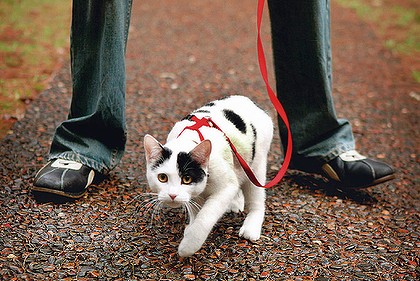How to Bring Your Pet with You When Moving to Australia

If you are planning on moving to Australia from the UK you will probably want to bring your pet with you – as your furry friend is a member of the family and it would be devastating to leave them behind. However, taking your pet to Australia is a complex process and there are a lot of things to consider before you make the move and if it is done wrong it can mean dire circumstances for you and your pet. Here are some important things that you should know if you are planning on transporting a pet:
What are the Requirements?
Your pet must have a microchip implanted in their ear that has a 15 digit number and is ISO 11784/11785 compliant. They must also have a Blood Titer Test no sooner than 180 days prior to entry. All puppies and kittens must have all of their rabies vaccinations and they should wait a minimum of 30 days after these rabies vaccinations before having their titer test.
It is also required to fill out an Import Permit for the animal no sooner than 42 days of import, after the titer test. Your pet is required to have a rabies vaccination within one year of when they enter the country. Also if you are importing a cat it is highly recommended that they receive a vaccination that will protect them from feline enteritis, calcivirus and rhinotracheitis. This vaccination should be valid for the full period of time post arrival that the cat will be in quarantine.

Dogs should be vaccinated against parvovirus, hepatitis, distemper and para-influenza. Dogs that have visited Africa will also need to be vaccinated against Babesia canis. These vaccinations must be administered within a DAFF approved country.
The cat or dog must have a health certificate that is completed within 72 hours of entry and is endorsed by the USDA or the CFIA. The dog must also be treated against internal parasites. Two treatments are required, with the second treatment administered within 5 days of transport.
Entering Via Air
All pets must enter Australia as air cargo via Sydney International Airport or Melbourne Airport. If there are not any direct flights from your country, you will need to plan a layover or transfer through a country that is approved by the DAFF.
It is a very long flight for a pet to endure, so talk to your vet for tips on how to ensure the well-being of your pet during this experience.
Quarantine
Any dog or cat that comes into Australia needs to spend a period of time in quarantine. This is to make sure that they do not carry any infectious diseases that could spread to the local animal population. Quarantine is managed by AQIS, which is the Australian Quarantine and Inspection Service. They are run by the Australian Government and they are part of the Department of Agriculture. Every pet will be kept for 10 days in quarantine.

Many pet owners are hesitant about leaving their pets in quarantine, but these pets are well looked after and they will be fine. You can look forward to picking them up for a happy reunion after the 10 days are done.
Are Any Breeds or Types of Pets Not Allowed?
There are some breeds of dog that are not permitted to enter Australia. These include the Presa Canario, Perro de Presa Canario, American Pit Bull, Pit Bull Terrier, Japanese Tosa, Fila Brazileiro and the Dogo Argentino.
There are also some types of pets that are not allowed in Australia. For example, you cannot bring in your guinea pigs, fish, chinchillas, hamsters, snakes, mice, lizards, turtles, ferrets and spiders. Horses may enter, but only from selected countries.
These are just a few of the important pointers that you should know if you are considering moving your pet with you when you emigrate to Australia. It will be a long and sometimes stressful process and it will cost quite a bit of money overall. However, if your furry friend is part of the family and you couldn’t imagine life without him or her – then it will all be worth the hassle when your beloved pet joins you in your new home in Australia.


